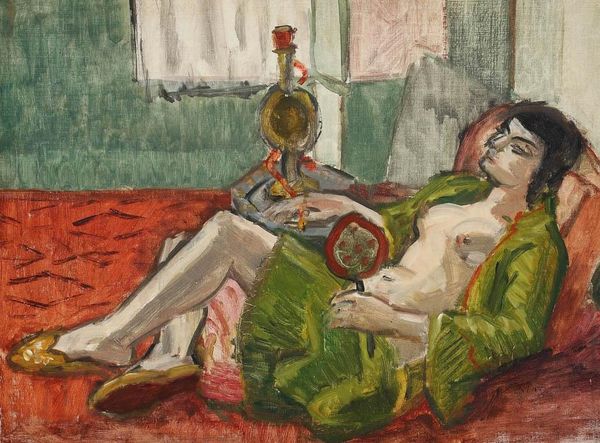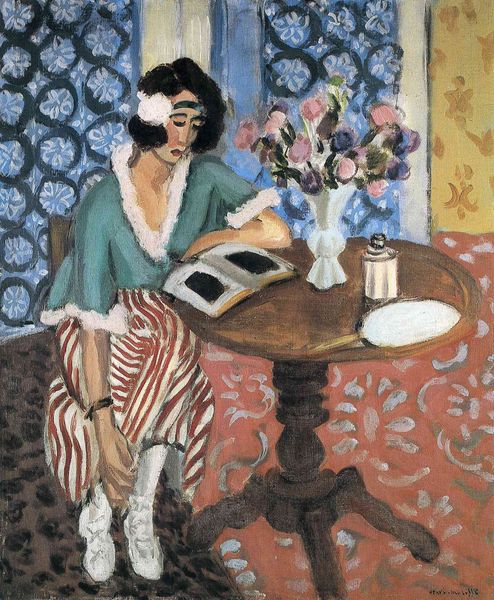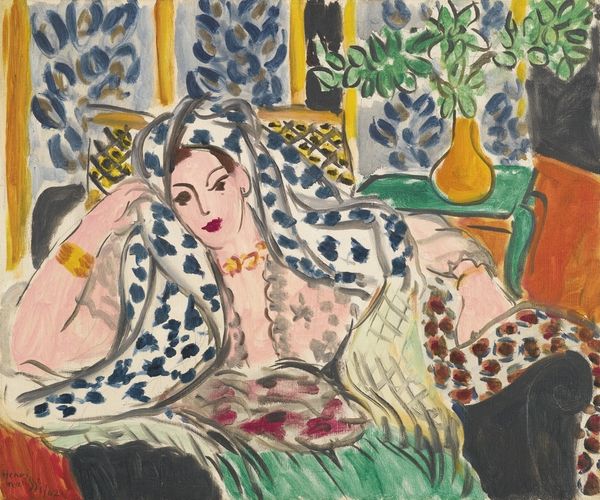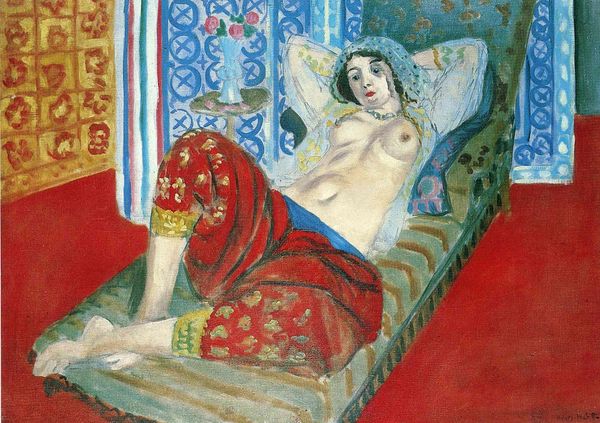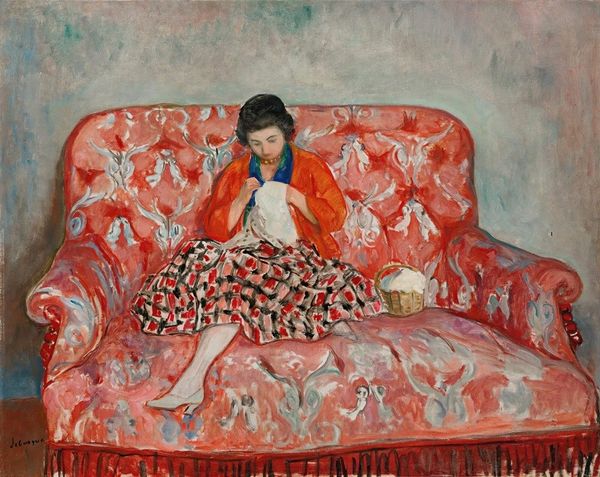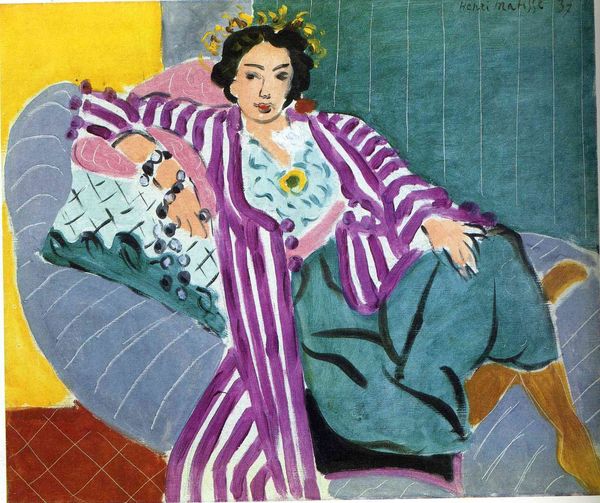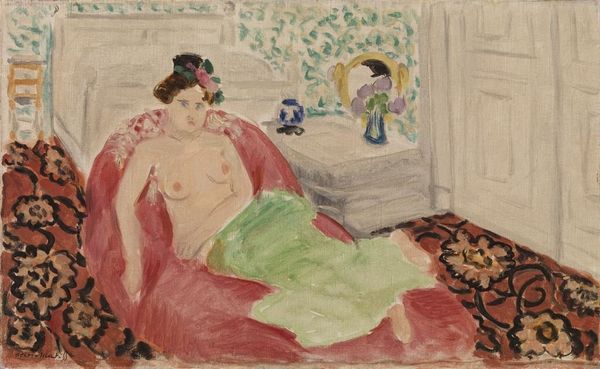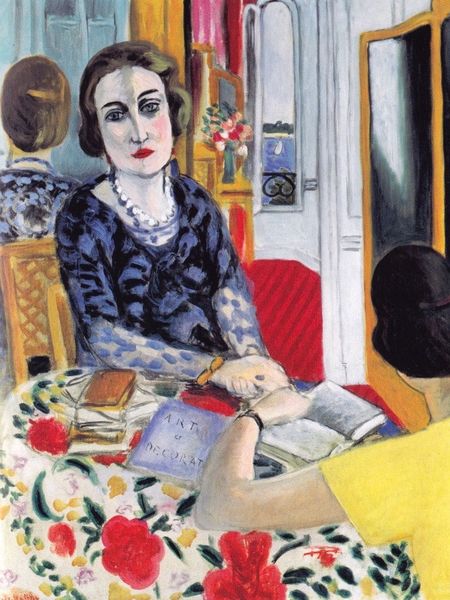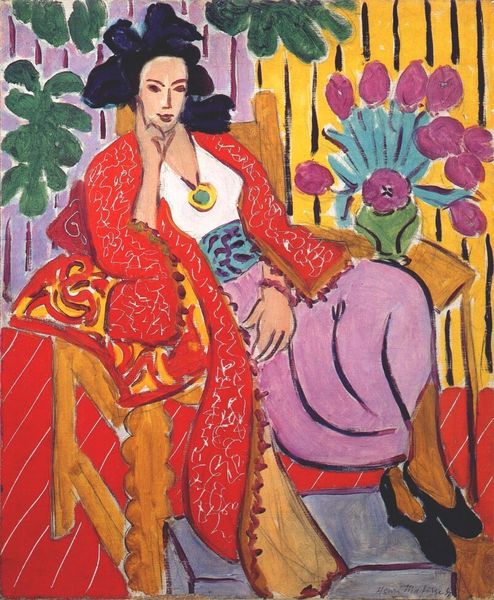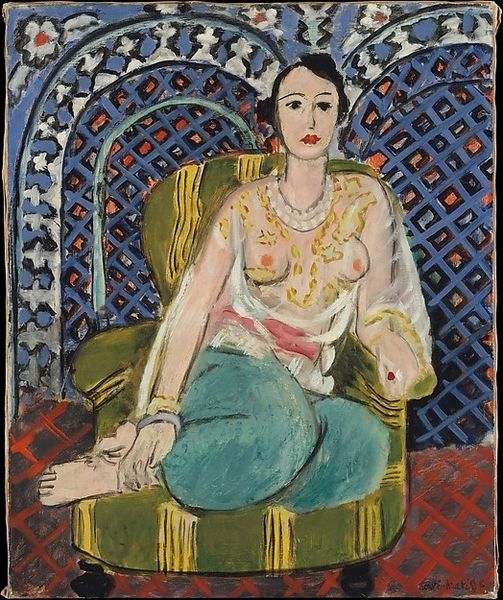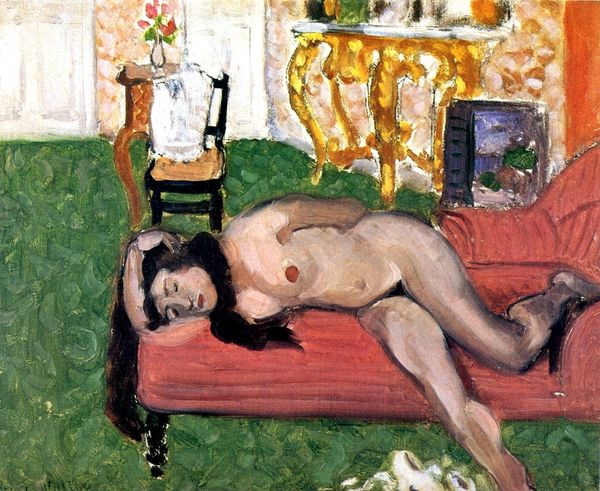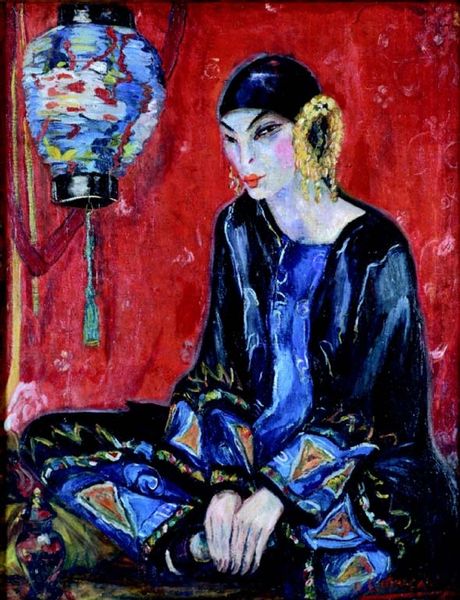
textile
#
abstract painting
#
egg art
#
textile
#
text
#
handmade artwork painting
#
oil painting
#
fluid art
#
acrylic on canvas
#
naive art
#
painting painterly
#
painting art
#
chaotic composition
Dimensions: 50 x 61 cm
Copyright: Public domain US
Curator: Welcome. Before us is Henri Matisse’s “Odalisque in red trousers," painted in 1921 and currently housed in the Musée de l'Orangerie, Paris. Editor: My first impression is one of opulent languor. The explosion of patterns and color feels almost intoxicating. It’s a vibrant, hedonistic space. Curator: The figure of the odalisque herself carries a complex history. Matisse repeatedly depicted this subject, drawing on orientalist tropes prevalent in French art during this period. These images were often entangled with colonial fantasies and projections of exoticism onto the "Orient." Editor: I see the compositional strategies very much in line with Matisse’s interest in flattening pictorial space. The layering of pattern upon pattern disrupts any sense of traditional perspective, creating a surface that almost vibrates. What seems like a window or a curtain isn’t providing depth so much as decorative continuity with the wallpaper. Curator: And that pattern language extends beyond mere decoration. Think of the symbolic weight attributed to textile design across cultures; it serves not only to adorn but also to transmit stories, status, and belonging. The motifs become part of the sitter's narrative, enriching our sense of place and perhaps hinting at a world beyond the immediate scene. Editor: Yet the painting challenges straightforward narratives, too. Look how Matisse employs dissonance, pitting hot against cool and weaving textures that both attract and repel the eye. Semiotically, he creates an unresolved tension which reflects not the actuality of Oriental culture so much as the European desire to mis-perceive it through a distorting colonial gaze. Curator: The work, indeed, offers a meditation on desire, artifice, and cultural encounter, doesn’t it? The patterns aren’t just visually compelling—they represent centuries of trade, artistic exchange, and unequal power dynamics. Editor: Examining how those dynamics play out structurally, considering, for example, how planes both integrate and disorient the observer, feels pivotal for moving beyond merely aesthetic admiration. Curator: Precisely. When we look at the repeated symbol of the odalisque within the broader cultural milieu, we understand this is more than just one image of a reclining woman in decorative surroundings. Editor: Instead, a complex construction worthy of close examination, which prompts us to acknowledge not only its aesthetic appeal but its complicated roots.
Comments
No comments
Be the first to comment and join the conversation on the ultimate creative platform.
